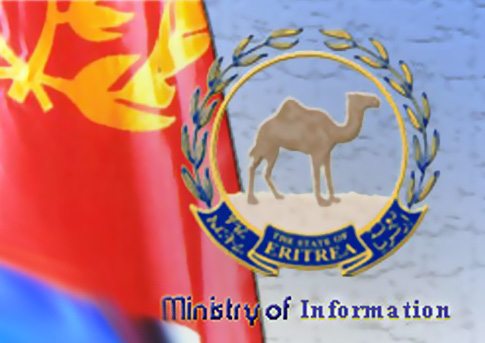The long efforts by the TFG and other pro-government forces, including AMISOM and Ethiopian units, to clean Somalia of the terrorist insurgency of Al-Shabaab are at last making real progress as the country’s overall security situation is visibly improving almost everywhere. The provision of security support to Somalia from neighboring countries following requests by the TFG and AMISOM, and subsequent endorsement by bodies such as IGAD and the AU has played a major role in these peace-keeping efforts. However, the reluctance of the international community to venture into Somalia left neighboring countries with no option but to provide their own support for the then Somali Transitional Federal Government’s efforts to free the country from Al-Shabaab. This was the fact behind the lifting of the Inter-Governmental Authority on Development’s resolution that had banned front line states from deploying their forces into Somalia. Now IGAD states after these successes are also calling for more coordinated and continued support to the new government of Somalia, to enable it to deliver on its security, stability, reconstruction and development priorities.
real progress as the country’s overall security situation is visibly improving almost everywhere. The provision of security support to Somalia from neighboring countries following requests by the TFG and AMISOM, and subsequent endorsement by bodies such as IGAD and the AU has played a major role in these peace-keeping efforts. However, the reluctance of the international community to venture into Somalia left neighboring countries with no option but to provide their own support for the then Somali Transitional Federal Government’s efforts to free the country from Al-Shabaab. This was the fact behind the lifting of the Inter-Governmental Authority on Development’s resolution that had banned front line states from deploying their forces into Somalia. Now IGAD states after these successes are also calling for more coordinated and continued support to the new government of Somalia, to enable it to deliver on its security, stability, reconstruction and development priorities.
The signs of improving security in Somalia are clear. A high-level Somali government delegation, headed by newly elected President Hassan Sheikh Mohamud visited Belet Weyne, 330 kilometers north of Mogadishu, on Tuesday this week following heavy rains and flooding which claimed the lives of over fifty people. The president’s office said the President wanted to see for himself the problems of the city’s residents and of the flood victims. The rain has forced hundreds of families out of their homes; many are now living in temporary camps built at the outskirts of Belet Weyne. The previous day, the President also visited Baidoa, another town also liberated by Ethiopian troops and local militias allied to the Transitional Federal Government. This was his first trip outside Mogadishu following his elections last month, and the President assessed the security and humanitarian situation in Baidoa and held talks with regional leaders, military officials and traditional elders. He also visited a military training camp and met with National Army soldiers as part of his promise that his government would give special priority to building the armed forces.
On Wednesday this week, a high-level delegation led by recently appointed British Secretary of State for International Development, Justine Greening, visited Somalia. Speaking at a joint press conference held at Villa Somalia, the presidential palace in Mogadishu, Secretary Greening said that the UK government welcomed the latest military progress being made by the African Union military forces against Al-Shabaab militants at Kismayo. She also expressed the UK government’s readiness to provide political and economic support to Somalia’s new federal government.
It was on Saturday last weekend that Al-Shabaab admitted that it had withdrawn from Kismayo following the surprise assault by African Union and Somali troops. It appeared the Kenyan troops of AMISOM landed from the sea and with the active engagement of clan leaders and of the local communities casualties were small. AMISOM and Somali forces quickly took up positions at the airport and the harbor to secure these strategic points. AMISOM rapidly organized patrols through the different areas of the city, and a Somali military spokesperson said government soldiers were being deployed “everywhere in Kismayo" including the police headquarters, the administration compound and in such places as the meat plant and the presidential palace. Kismayo, of course, is the second-largest port in Somalia and Al-Shabaab had been using it as its major financial resource for the last five years, controlling all goods passing through the port and taking very high taxes from local merchants. Its loss will certainly have a serious impact on Al- Shabaab’s economic prospects.
Kismayo is now gradually returning to normal despite some residents’ fear of more attacks by Al-Shabaab supporters. The allied forces are being cautious of possible explosives planted by Al-Shabaab before they left the city, and have been identifying possible areas where it may have planted improvised explosive devices. There were several bomb explosions on Tuesday in the city which according to Somali military officials came from devices planted in several places including the port, at allied forces’ bases and in the center of the city. A spokesman for Somali government forces, Colonel Adan Rufle, confirmed that "there were two civilian deaths in the bombings on Tuesday and many more injured…[but] there were no military casualties.” Al-Shabaab’s spokesman, Abdiaziz Abu Musab, claimed the group’s responsibility for the attacks and said Al-Shabaab agents would continue their fight "until doomsday.”
Somali President, Hassan Sheikh Mohamud, on Monday praised AMISOM “for forcing Al-Shabaab to vacate from the city". A statement released from the President’s Office said the Somali government commended AMISOM and the Somali troops for the bravery they had shown. U.S. Assistant Secretary of State, Johnnie Carson, on Monday also described the fall of Kismayo as a major step forward, and said AMISOM and the Somali forces deserved every credit for driving Al-Shabaab out of its last stronghold. Ethiopia’s Minister of National Defence, Siraj Fergessa, speaking at a Joint Consultative meeting of AU peacekeepers and the Somali government said that the weakening of Al-Shabaab would contribute significantly to the advance of Somalia’s politics. He added that AMISOM’s victories in taking over Al-Shabaab’s strongholds, including Kismayo, opened a new chapter for the advancement of peace in Somalia. He took the opportunity to assure those present that Ethiopia would continue to exert every effort towards the consolidation of peace and stability in Somalia. The meeting was called to discuss ways to sustain gains for peace and stability in Somalia following the take-over of Kismayo and other areas through the joint AMISOM and government operations.
The liberation of Kismayo underlines the significant progress being made by AMISOM and the government – the one "who controls Kismayo controls southern Somalia’. This also underlines the equal importance of the next step, that is for all stakeholders to agree on what will be the future of Kismayo. It is important for stakeholders to support Somalis to organize settled direction for control of the city and for the establishment of a local administration in Kismayo. The government is now setting up a group of elders to come up with a settled and agreed option for the future of the city. More widely, there is also widespread agreement on the importance of urgently supporting and providing the necessary financial assistance through organized channels for the establishment of genuine Somali police and national military forces. These will be indispensable when AMISOM and other elements which currently provide necessary professionalism eventually have to leave.
**************************
Source: A Week in the Horn – Oct. 5, 2012. Originally titled “Kismayo captured: Somalia’s security situation visibly improving”.
Check the Somalia archive for related posts.





